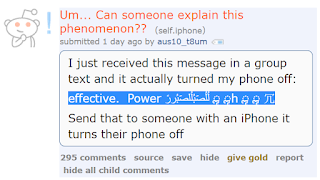You'll need to be Jailbroken (obviously). Add the following two repos:
- http://nix.howett.net/theos
- http://coolstar.org/publicrepo/
- OpenSSH
- Filza (this is what I use) or iFile
- Your choice of mobile terminal. I like WhiteTerminal
- wget
- iOS Toolchain
- Perl
- THEOS
You are almost there. To check if THEOS was installed correctly, fire up your mobile terminal app and enter the following:
- $THEOS
- /var/theos: is a directory
Now we need to install/download/ an iOS SDK. Choose a folder to download the file in. The easiest choice would be Documents.
Here's option number one:
Open up your terminal and type:
- cd /var/mobile/Documents
- wget http://iphone.howett.net/sdks/dl/iPhoneOS8.1.sdk.tbz2
- http://iphone.howett.net/sdks/
Here you need to look for the newest one. At the time of this post is 8.1. And download it to your 'Documents' folder. Are you having fun yet?
Now, we need to place the SDK inside the THEOS directory. Fire up your flavor of mobile terminal and follow these steps:
We need to create a folder inside the THEOS directory call sdks, type this:
- mkdir $THEOS/sdks
- mv /var/mobile/Documents/iPhoneOS8.1.sdk.tbz2 $THEOS/sdks/
- tar xjvf iPhoneOS8.1.sdk.tbz2
- rm iPhoneOS8.1.sdk.tbz2
If you went to:
- http://iphone.howett.net/sdks/
- /var/theos/
- iPhoneOS8.1.sdk.tbz2
- ln -s $THEOS/makefiles/platform/Darwin-arm.mk $THEOS/makefiles/platform/Darwin-arm64.mk
- ln -s $THEOS/makefiles/targets/Darwin-arm $THEOS/makefiles/targets/Darwin-arm64
Next up is how to create a tweak from a FLEX patch.



